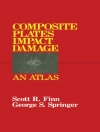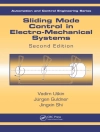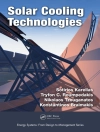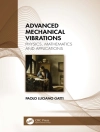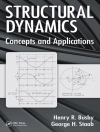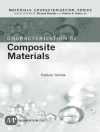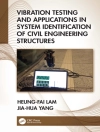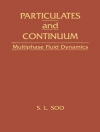An invaluable addition to the literature on UAV guidance and
cooperative control, Cooperative Path Planning of Unmanned
Aerial Vehicles is a dedicated, practical guide to
computational path planning for UAVs. One of the key issues facing
future development of UAVs is path planning: it is vital that swarm
UAVs/ MAVs can cooperate together in a coordinated manner, obeying
a pre-planned course but able to react to their environment by
communicating and cooperating. An optimized path is necessary in
order to ensure a UAV completes its mission efficiently, safely,
and successfully.
Focussing on the path planning of multiple UAVs for simultaneous
arrival on target, Cooperative Path Planning of Unmanned Aerial
Vehicles also offers coverage of path planners that are
applicable to land, sea, or space-borne vehicles.
Cooperative Path Planning of Unmanned Aerial Vehicles is
authored by leading researchers from Cranfield University and
provides an authoritative resource for researchers, academics and
engineers working in the area of cooperative systems, cooperative
control and optimization particularly in the aerospace
industry.
สารบัญ
About the Authors.
Series Preface.
Preface.
Acknowledgements.
List of Figures.
List of Tables.
Nomenclature.
1. Introduction.
1.1 Path Planning Formulation.
1.2 Path Planning Constraints.
1.3 Cooperative Path Planning and Mission Planning.
1.4 Path Planning – An Overview.
1.5 The Road Map Method.
1.6 Probabilistic Methods.
1.7 Potential Field.
1.8 Cell Decomposition.
1.9 Optimal Control.
1.10 Optimization Techniques.
1.11 Trajectories for Path Planning.
1.12 Outline of the Book.
References.
2. Path Planning in Two Dimensions.
2.1 Dubins Paths.
2.2 Designing Dubins Path using Analytical Geometry.
2.3 Existence of Dubins Paths.
2.4 Length of Dubins Paths.
2.5 Design of Dubins Paths using Principles of Differential
Geometry.
2.6 Path of Continuous Curvature.
2.7 Producing Flyable Clothoid Paths.
28 Producing Flyable Pythagorean Hodograph Paths (2D).
References.
3. Path Planning in Three Dimensions.
3.1 Dubins Paths in Three Dimensions Using Differential
Geometry.
3.2 Path Length – Dubins 3D.
3.3 Pythagorean Hodograph Paths – 3D.
3.4 Design of Flyable Paths Using PH Curves.
References.
4. Collision Avoidance.
4.1 Research into Obstacle Avoidance.
4.2 Obstacle Avoidance for Mapped Obstacles.
4.3 Obstacle Avoidance of Unmapped Static Obstacles.
4.4 Algorithmic Implementation.
References.
5. Path-Following Guidance.
5.1 Path Following the Dubins Path.
5.2 Linear Guidance Algorithm.
5.3 Nonlinear Dynamic Inversion Guidance.
5.4 Dynamic Obstacle Avoidance Guidance.
References.
6. Path Planning for Multiple UAVs.
6.1 Problem Formulation.
6.2 Simultaneous Arrival.
6.3 Phase I: Producing Flyable Paths.
6.4 Phase II: Producing Feasible Paths.
6.5 Phase III: Equalizing Path Length.
6.6 Multiple Path Algorithm.
6.7 Algorithm Application for Multiple UAVs.
6.8 2D Pythagorean Hodograph Paths.
6.9 3D Dubins Paths.
6.10 3D Pythagorean Hodograph Paths.
References.
Appendix A Differential Geometry.
Appendix B. Pythagorean Hodograph.
Index.
เกี่ยวกับผู้แต่ง
Antonios Tsourdos is a Reader in Autonomous Systems and
Control and Head of the Guidance and Control Group at Cranfield.
His research areas include UAV Autonomy, UAV Path Planning,
Coordinated Guidance, Cooperative Control, UAV Swarm, Autonomous
Sensors Network, Sensor and Data Fusion, and Vehicle Health
Management. He has authored many scientific research papers and has
served as a guest editor for journal special issues on
‘multi-vehicle systems cooperative control with applications’;
‘advances in missile guidance and control: theory and practice’,
and cooperative control approaches for multiple mobile robots’.
Brian A White, now Professor Emeritus at Cranfield, was
until recently Head of the Department of Aerospace, Power and
Sensors and also Head of the Guidance and Control Group at
Cranfield. His areas of expertise are robust control, non-linear
control, estimation, observer applications, inertial navigation,
guidance design, soft computing and sensor and data fusion. He has
published widely in the control science field, mainly on autopilot
design and guidance. He has managed significant contracts in the
area of guidance. He has organized and run numerous invited
sessions at major control conferences and co-edited a special issue
of the IFAC journal Control Engineering Practice on Control in
Defence Systems. He has served as associate editor for the IMech E
Journal of Aerospace Engineering (Part G), IMech E Journal of
Systems and Control Engineering (Part I), and the Journal of
Nonlinear Studies.
Madhavan Shanmugavel is a Research Officer within the
Guidance and Control Group at Cranfield.


